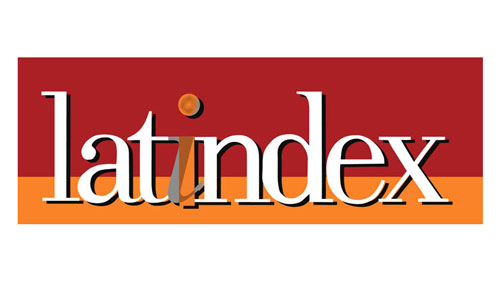Struggles of the phoenix and myrtle: strategies and challenges for preserving the cherokee and guarani languages
DOI:
https://doi.org/10.26512/rhla.v22i2.46989Keywords:
Cherokee, Guarani, Vitality, Language shift, DiversityAbstract
This article explores the role of writing for the preservation of oral languages stemming from the story about the creation of the Cherokee syllabary. Based on the tale about the reception of the syllabary by members of the Cherokee Nation, the article deals with the concept of blasphemy proposed by Bhabha (1998) aiming at investigating the ambiguity of applying the technology of writing for the Cherokee people. In a second moment, three articles are revised and interrelated. Guyette’s article (1981) analyzes the vitality of the Cherokee language by researching the domains in which the language is used by three Cherokee communities; Velasquez (2021) writes about the bilingual education of the Guarani people in Paraná; and Peter (2007) analyzes the experience of an immersion school in Cherokee for children as one of the initiatives for reversing language shift. We conclude, in conversation with Bastardas-Bodas (2012), that linguistic diversity must be protected and encouraged, mostly when facing the risks presented by languages of international commerce such as English. Linguistic diversity is understood as shaping a robust symbolic ecology of ways to live and think.
Downloads
References
ANZALDÚA, G. Como domar uma língua selvagem. Cadernos de Letras da UFF – Dossiê: Difusão da Língua Portuguesa, n. 39, p. 297-309, 2009.
BASTARDAS-BOADA, A. Language and identity policies in the “glocal” age: new processes, effects and principles of organization. Generalitat de Catalunya, Barcelona: Institut d’Estudis Autonòmics, 2012.
BHABHA, Homi. K. Como o novo entra no mundo: o espaço pós-moderno, os tempos pós-coloniais e as provações da tradução cultural. In: ______. O local da cultura. Tradução de Myriam Avila, Eliane Livia Reis e Glauce Gonçalves. Belo Horizonte: Editora UFMG, 1998. p. 292-325.
BROWN, M. Sequoyah. The Georgia Review, Athens, v. 1, n. 4, p. 490-499, 1947. Disponível em: http://www.jstor.org/stable/41397575. Acesso em: 07 jul. 2022.
CASTRO, E. V. de. O mármore e a murta: sobre a inconstância da alma selvagem. Revista de Antropologia, São Paulo, USP, v. 35, p. 21-74, 1992.
DWYER, A. M. Tools and techniques for endangered-language assessment and revitalization. Vitality and Viability of Minority Languages, New York: Trace Foundation Lecture Series Proceedings. Preprint. Online, p. 23-24, Oct. 2009. Disponível em: https://kuscholarworks.ku.edu/bitstream/handle/1808/7109/Dwyer2011_AssessRevitalize.pdf%3Bjsessionid=627FA45E0962C1048D37967AAAAA5477?sequence=1. Acesso em: 10 jul. 2022.
FISHMAN, J. A. Reversing Language Shift: theoretical and empirical Foundations of Assistance to threatened languages. Clevedon, UK: Multilingual Matters Limited, 1991.
GOODY, J. The power of the written tradition. Washington, DC: Smithsonian Institute, 2000.
GULDIN, R. From spatial metaphors of translation to translation as a spatial metaphor. In: _____. Translation as Metaphor. New York: Routledge, 2016. p. 46-68.
GUYETTE, S. An examination of cherokee language vitality. Anthropological Linguistics, Bloomington, v. 23, n. 5, p. 215-225, 1981. Disponível em: http://www.jstor.org/stable/30027860. Acesso em: 09 jul. 2022.
hooks, b. A língua: ensinando novos mundos/novas palavras. In: _____. Ensinando a transgredir. Tradução de Marcelo Brandão Cipolla. São Paulo: Martins Fontes, 2017. p. 223-33.
KRAUSS, M. Status of native American language endangerment. In: CANTONI, G. Stabilizing Indigenous Languages. Flagstaff: Northern Arizona University; Center for Excellence in Education, 1996. p. 16-21.
LEWIS, M. P. Towards a categorization of some of the world’s endangered languages. SIL International, 2005. Disponível em: https://www.sil.org/system/files/reapdata/11/06/66/110666044150280343746982864318875338806/silewp2006_002.pdf. Acesso em: 10 jul. 2022.
PETER, L. “Our beloved cherokee”: a naturalistic study of cherokee preschool language immersion. Anthropology & Education Quarterly, v. 38, n. 4, p. 323-342, 2007. Disponível em: http://www.jstor.org/stable/25166634. Acesso em: 10 jul. 2022.
SOUZA, T. C. C. de. Língua nacional e materialidade discursiva: a influência do tupi. In: MELLO, H. et. Al. (Org.). Os contatos linguísticos no Brasil. Belo Horizonte: Editora UFMG, 2011. p. 241-254.
VELASQUEZ, P. P. O ensino de língua guarani e portuguesa em comunidades indígenas do Paraná. RELVA, v. 8, n. 1, p. 55-70, jan./jun. 2021. Disponível em: https://periodicos.unemat.br/index.php/relva/article/view/5721/4302. Acesso em: 08 jul. 2022.
Downloads
Published
How to Cite
Issue
Section
License
Copyright (c) 2023 Revista Horizontes de Linguistica Aplicada

This work is licensed under a Creative Commons Attribution-NonCommercial-NoDerivatives 4.0 International License.

A Revista Horizontes de Linguística Aplicada de http://seer.bce.unb.br/index.php/horizontesla/index é licenciado sob uma Licença Creative Commons Atribuição-Uso não-comercial-Vedada a criação de obras derivadas 3.0 Unported.
- Autores mantém os direitos autorais e concedem à revista o direito de primeira publicação, sendo o trabalho simultaneamente licenciado sob a Creative Commons Attribution License o que permite o compartilhamento do trabalho com reconhecimento da autoria do trabalho e publicação inicial nesta revista.
- Autores têm autorização para assumir contratos adicionais separadamente, para distribuição não-exclusiva da versão do trabalho publicada nesta revista (ex.: publicar em repositório institucional ou como capítulo de livro), com reconhecimento de autoria e publicação inicial nesta revista.




